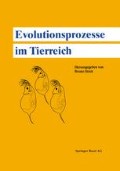Zusammenfassung
Das Konzept des biologischen Artbegriffs ist eine entscheidende Grundlage für das Verständnis von Evolutionsprozessen (Mayr 1967) und eine wichtige Basis für die Rekonstruktion der Verwandtschaft der Arten (Ax 1984). Arten sind als potentielle Fortpflanzungsgemeinschaften mit ihrer genetischen Isolierung gegenüber anderen klar abgrenzbar. Arten können daher als natürliche biologische Systeme auf der Populationsebene angesehen werden. Die charakteristische Interaktion innerhalb dieser Systeme ist der Genaustausch (Mossakowski & Nettmann 1985). Hybridzonen sind als Übergangsfälle von besonderem Interesse; Hewitt (1988) bezeichnete sie als natürliche Laboratorien für den Evolutionsbiologen.
Access this chapter
Tax calculation will be finalised at checkout
Purchases are for personal use only
Preview
Unable to display preview. Download preview PDF.
Literatur
Allemand, R., Malausa, J.-C. (1984): Compatibilité génétique et distances phylétiques entre les espèces du genre Chrysocarabus Thomson (Col., Carabidae). Annls. Soc. ent. France NS 20: 347–363.
Ax, P. (1984): Das Phylogenetische System. Fischer, Stuttgart, New York.
Barton, N.H., Hewitt, G.M. (1985): Analysis of hybrid zones. Ann Rev. Ecol. Syst. 16: 113–148.
Berger, L. (1967): Embryonal and larval development of F1- generation of green frogs different combinations. Acta Zool. Cracow 12: 123–160.
Braun, S., Malausa, J.-C., Mossakowski, D. (1989): Polymorphism and genetic control of chymotrypsin- and trypsin-like enzymes in carabid beetles ( Coleoptera, Carabidae). Zum Druck eingereicht.
Breuning, S. (1932–1936): Monographie der Gattung Carabus. Best.-tab. europ. Coleopt., 104–110, Troppau.
Butlin, R.K., Hewitt, G.M. (1985): A hybridization between Chorthippus parallelus and C. p. erythropus (Orthoptera; Acrididae): morphological and electrophoretic characters. Biol. J. Linn. Soc. 26: 269–285.
De Lapouge, G.V. (1932): Coleoptera Adephaga. Fam. Carabidae. Subfam. Carabinae. Genera Insektorum 192: 1–747.
Dubois, A., Günther, R. (1982): Klepton and Synklepton: two new evolutionary systematics categories in zoology. Zool. Jb. Syst. 109: 290–305.
Eikhorst, R. (1988): Der Rana esculenta-Komplex–Ein Überblick über 20 Jahre Wasserfroschforschung. Jb. Feldherpetol. Beih. 1: 7–22.
Endler, J.A. (1977): Geographic variation, speciation, and clines. Princeton Univ. Press. ( Monographs in Population Biology 10 ).
Gollmann, G. (1984): Allozymic and morphological variation in the hybrid zone between Bombina bombina and B. variegata (Anura, Discoglossidae) in northeastern Austria. Z. zool. Syst. Evolut.-forsch. 22: 51–64.
Harrison, R.G. (1986): Pattern and process in a narrow hybrid zone. Heredity 56: 337–349.
Hewitt, G.M. (1988): Hybrid zones–natural laboratories for evolutionary studies. Trends Ecol. Evolut. 3: 158–167.
Key, K.H.L. (1981): Species, parapatry, and the morabine grashoppers. Syst. Zool. 30: 425–458.
Littlejohn, M.J., Watson, G.F. (1985): Hybrid zones and homogamy in Australian frogs. Ann. Rev. Ecol. Syst. 16: 85–112.
Mayr, E. (1967): Artbegriff und Evolution. Parey, Hamburg.
Meise, W. (1936): Zur Systematik und Verbreitungsgeschichte des Haus- und Weidensperlings, Passer domesticus (L.) und hispaniolensis (T.). J. Ornithol. 84: 631–671.
Moore, W.S. (1977): An evaluation of narrow hybrid zones in vertebrates. Quart. Rev. Biol. 52: 263–277.
Mossakowski, D. (1988): Schmale oder breite Hybridzone: das Beispiel zweier Chrysocarabus-Arten. Mitt. Dtsch. Ges. allg. angew. Ent. 6: 542–547.
Mossakowski, D., Braun, S., Roschen, A. (1990): Hybridization in natural populations of ground beetles ( Coleoptera, Carabidae). Can. J. Zool. (im Druck).
Mossakowski, D., Nettmann, H.-K. (1985): Zur hierarchischen Gliederung natürlicher biologischer und ökologischer Systeme. Verh. Ges. Ökol. 13: 257–262.
Mossakowski, D., Roschen, A., Vaje, S. (1986): Hybridization in Chrysocarabus, S. 281–295. [In:] Den Boer et al.: Carabid Beetles. Their Adaptations and Dynamics. G. Fischer, Stuttgart, New York.
Mossakowski, D., Vaje, S., Roschen, A. (1984): Biochemische und morphometrische Merkmalsdifferenzierungen bei Chrysocarabus. Verh. Dtsch. Zool. Ges. 77: 255.
Mossakowski, D., Weber, F. (1976): Chromosomale und morphometrische Divergenzen bei Carabus lineatus und C. splendens (Carabidae). Ein Vergleich sympatrischer und allopatrischer Populationen. Z. zool. Syst. Evolut.-forsch. 14: 280–291.
Palma-Otal, M., Moore, W.S., Adams, R.P., Joswiak, G.R. (1983): Morphological, chemical, and biogeographical analyses of a hybrid zone involving Juniperus virginiana and J. horizontalis. Can. J. Bot. 61: 2733–2746.
Puissegur, C. (1964): Recherches sur la génétique des Carabes. Vie Milieu, Suppl. 18: 1–288.
Rahmel, U. (1988): Neue Daten zur Verbreitung des Seefrosches (Rana ridibundti Pallas, 1771) in Niedersachsen. Jb. Feldherpetol. Beih. 1: 47–66.
Rempe, U. (1965): Lassen sich bei Säugetieren Introgressionen mit multivariaten Verfahren nachweisen? Z. zool. Syst. Evolut.-forsch. 3: 388–412.
Roschen, A. (1984): Ökologische Differenzierung zweier Chrysocarabus-Arten und ihres Bastards (Col. Carabidae). Unveröffentl. Diplomarbeit Universität Bremen.
Roschen, A., Mossakowski, D. (1986): Ecological differentiation in Chrysocarabus populations. A study of two sympatric species and their hybrid, p. 297–312. [In:] Den Boer et al.: Carabid beetles. Their adaptations and dynamics. G. Fischer, Stuttgart, New York.
Schultz, R.J. (1969): Hybridization, unisexuality, and polyploidy in the teleost Poeciliopsis (Poeciliidae) and other vertebrates. Am. Natur. 103: 605–609.
Seitz, A. (1984): Computersimulation zum Problem der sympatrischen und parapatrischen Speziation. Verh. Dtsch. Zool. Ges. 77: 257.
Strenzke, K. (1951): Grundfragen der Autökologie. Acta biotheor. 9: 163–184.
Szymura, J.M. (1976): Hybridisation between discoglossid toads Bombina bombina and Bombina variegata in southern Poland as revealed by the electrophoretic technique. Z. zool. Syst. Evolut.-forsch. 14: 227–236
Szymura, J.M., Barton, N.H. (1986): Genetic analysis of a hybrid zone between the fire bellied toads, Bombina bombina and B. variegata, near Cracow in southern Poland. Evolution 40: 1141–1159.
Wallis, G.P., Arntzen, J.W. (1989): Variation in the crested newt superspecies: limited cytoplasmatic gene flow among species. Evolution 43: 88–104.
Vaje, S. (1988): Stabilität der Artgrenze bei naheverwandten ChrysocarabusFormen: Differenzierungen biochemischer Merkmale. Unveröffentl. Diss. Universität Bremen, 156 S.
Vaje, S., Mossakowski, D., Gabel, D. (1984): Temporal, intra- and interspecific variation of proteolytic enzymes in carabid beetles. Insect Biochem. 14: 313–320.
White, M.J.D. (1973): Animal Cytology and Evolution, 3rd ed. Cambridge Univ. Press, Cambridge.
Willmann, R. (1985): Die Art in Raum und Zeit. Parey, Berlin; Hamburg.
Woodruff, D.S. (1973): Natural hybridisation and hybrid zones. Syst. Zool. 22: 213–218.
Zwölfer, H., Bush, G.L. (1984): Sympatrische und parapatrische Artbildung. Z. zool. Syst. Evolut.-forsch. 22: 211–233.
Author information
Authors and Affiliations
Editor information
Editors and Affiliations
Rights and permissions
Copyright information
© 1989 Springer Basel AG
About this chapter
Cite this chapter
Mossakowski, D. (1989). Hybridzonen an Artgrenzen: Regelfall oder Ausnahme in der Zoologie ?. In: Streit, B. (eds) Evolutionsprozesse im Tierreich. Birkhäuser, Basel. https://doi.org/10.1007/978-3-0348-5214-2_12
Download citation
DOI: https://doi.org/10.1007/978-3-0348-5214-2_12
Publisher Name: Birkhäuser, Basel
Print ISBN: 978-3-0348-5215-9
Online ISBN: 978-3-0348-5214-2
eBook Packages: Springer Book Archive

